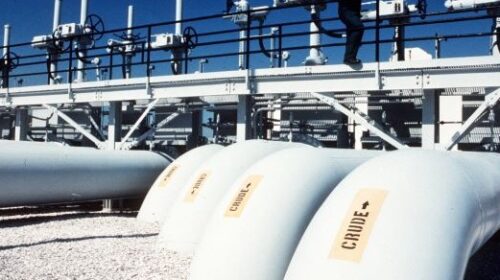The Strategic Petroleum Reserve’s (SPR) oil is sold competitively when the President of the United States of America finds, pursuant to the conditions set forth in the Energy Policy and Conservation Act (EPCA), that a sale is required. In the past, oil resources were withdrawn from the SPR to meet domestic oil requirements – such as Emergency Drawdowns, Non-Emergency Sales, SPR Modernization Sales, and Mandated Sales. In March 2022, such orders were issued by the President of the United States, Joe Biden. President Biden has decided to open the SPR to mitigate the consequences of the Russia-Ukraine conflict that led the United States and its allies to put harsh economic sanctions on Russia. Consequently, these sanctions, and not unexpectedly, tight oil and gas supply in the international market has raised international energy prices.
There are two factors that simultaneously occurred and accelerated the withdrawals from the SPR from March 21 to July 2022. During this period, inflation remained above the target rate of 2%. The real problem is mainly associated with the aftermath of COVID-19. The supply chain issues, stimulus over an extended period, and low-interest rates have helped to reinvigorate the U.S. economy, but have led to a prolonged period of high inflation. Economic stimulus and rising oil and gas prices have further aggravated domestic inflation causing hardship to domestic consumers. In fact, it gradually increased from 2.6% in March 2021 to 9.1% in June 2022. At the same time, WTI was also trending upward, rising from around $60/bbl in March 2021 to over $100/bbl most of the year 2022 (see Figure-1 & 2). To provide some relief to domestic consumers, the United States withdrew 169.768 million barrels from the SPR during this period. As a result, the SPR reached the low level of 468 million barrels at the end of July 2022. More recently, there were reports that there were only 427.2 million barrels of fuel left in the reserve fuel stocks of the United States that could cater to about 50 days of the U.S’ daily oil consumption.
Related: Cash For Fracking: UK Households May Receive Payouts For Allowing Fracking
This year’s SPR withdrawal constitutes the largest-ever withdrawal on record. An argument can be made here that the U.S. government has taken proactive measures of economic sanctions on Russia and was quite aware of the consequences.
Whatever the argument, the message is clear to OPEC and Russia that if they try to manipulate oil production for higher oil prices, the U.S. will counter it by releasing crude from its SPR. The only danger is how much SPR can be released risk-free, from a strategic perspective, and how long will it take to replenish SPR reserves.
Surely, it will take many years or decades to refill the SPR to roughly 700 million barrels. The speed of replenishment depends on many factors. However, the biggest factors are oil prices and the development of domestic inflation. Excessive withdrawals could be risky, as Russia could intentionally prolong the conflict with Ukraine. This strategy provides more leverage to OPEC to manipulate oil production to push oil prices even higher. Such a strategy by OPEC and Russia may create further oil and gas shortages in Europe in particular. As expected, OPEC and non-OPEC allies, also referred to as OPEC+, announced on October 5, 2022 that they will cut oil production by 2 million barrels a day (mmbd) starting in November. With the rise in oil prices, global natural gas and electricity prices will also rise. If the upcoming winter in Europe is harsh, consumers suffering from fuel shortages will be test cases for their respective governments. Furthermore, at some point, the U.S. will not have the luxury of additional SPR releases to keep oil prices in check and to provide relief to domestic consumers. Prolonging such a strategy may backfire. Therefore, the U.S. should adopt a strategy of increasing domestic oil production to reduce oil import dependency and have more flexible strategic options.







